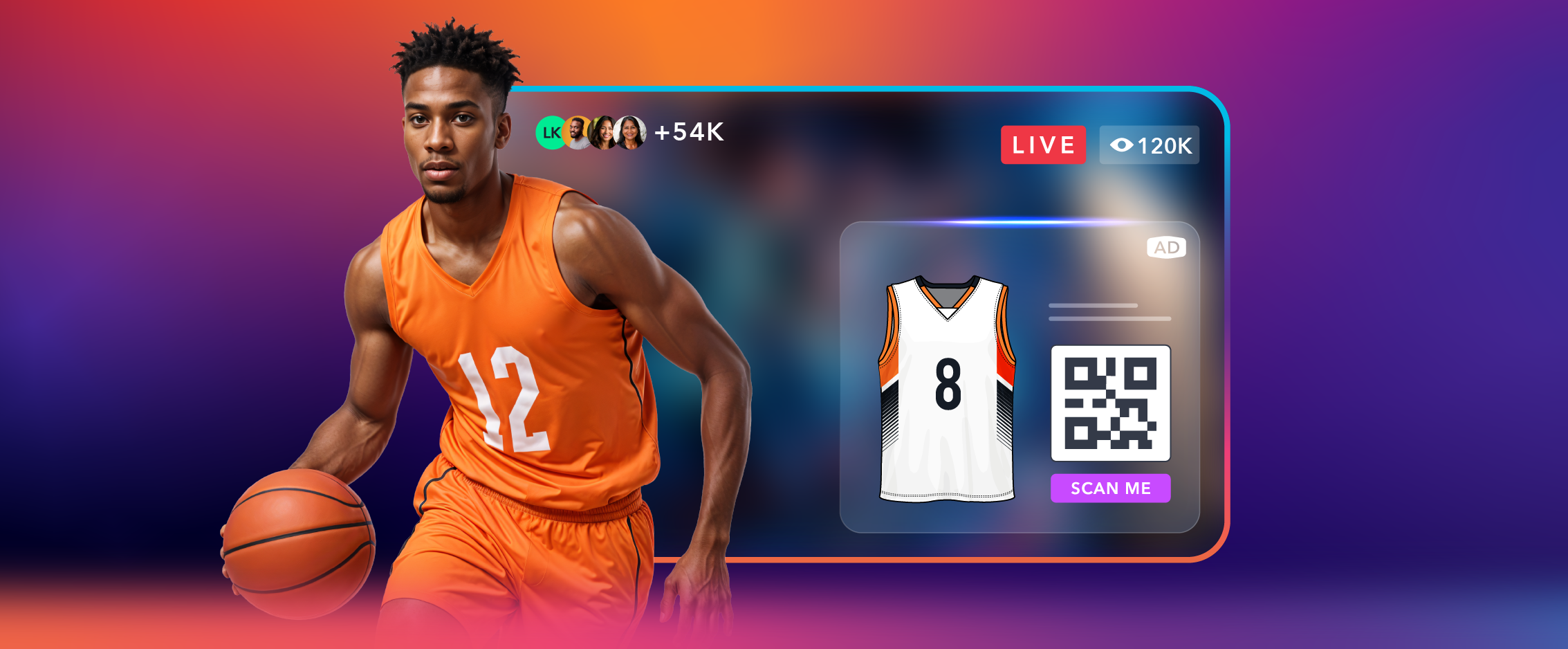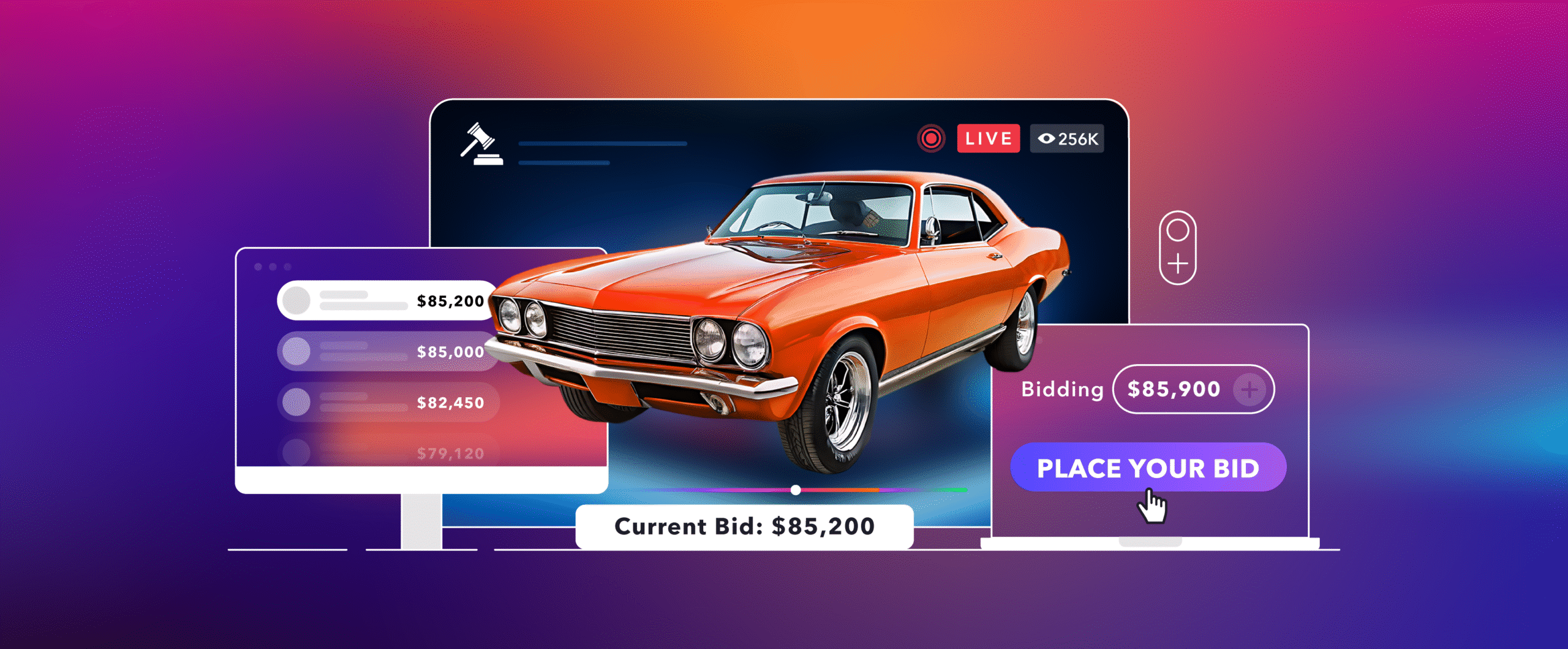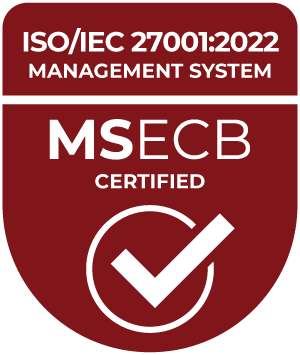Understanding key metrics, such as eCPM, is crucial for video publishers seeking to optimize their advertising revenue. With a clear understanding of eCPM and other metrics, you can assess the performance of ads on your content and adjust as needed to improve your results.
In this article, we will discuss everything related to eCPM. We will cover what eCPM is and the formula used to calculate it. We’ll also discuss what is essential for video advertising and how you can improve your eCPM on your video content. To wrap things up, we will discuss some other important metrics and buying models for video advertising.
What is eCPM?
eCPM stands for “effective cost per mille.” This is a crucial advertising metric that measures the success of advertisements by estimating the ad revenue generated per thousand impressions.
This metric is crucial for both media publishers and advertisers, as it estimates the amount the publisher will earn and the amount the advertiser will pay. From a publisher’s standpoint, a higher eCPM is ideal because it indicates that they can expect to make more money from the ads on their content.
eCPM is synonymous with revenue per mille (RPM), and it was previously used on the publishing side for internal revenue calculations. However, the industry has moved toward using eCPM as the standard term for both publishers and advertisers to create consistency and avoid confusion.
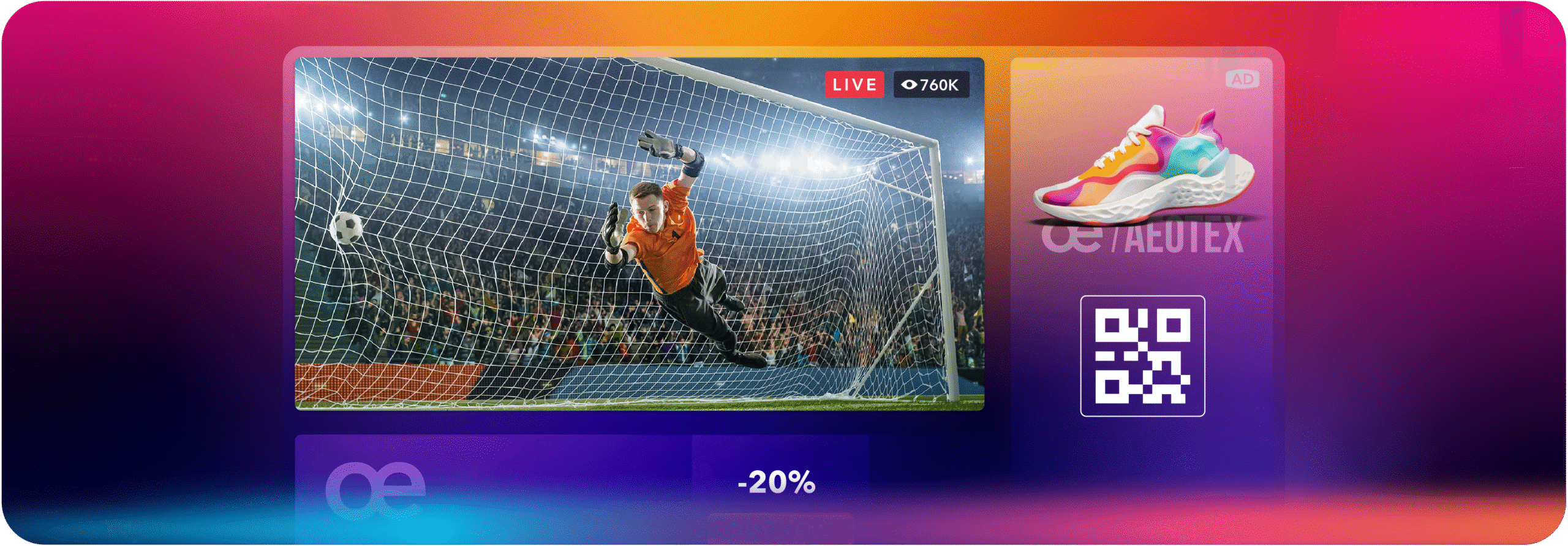
Why is eCPM important?
eCPM is a crucial metric in advertising because it sets earning expectations for both publishers and advertisers. It also helps publishers assess the results of ads in their content, allowing them to adjust their setups and strategies accordingly to ensure their endeavors are successful.
Even more specifically, monitoring the eCPM on various pieces of content helps publishers determine which advertisers are the best fit for their content, both from a brand and an earnings perspective. It can also provide insight into which pieces of content resonate most with their respective target audiences for their advertisements.
From an advertiser’s perspective, eCPM can also help brands decide which media publishers are the most successful. Although finding competitively priced advertising is the goal for these brands, they may be willing to pay a bit more to advertise on a media platform that has demonstrated recurring success with advertisements.
CPM vs. eCPM
As we delve into eCPM, it’s essential to understand how it compares to CPM. CPM stands for “cost per mille.” Although it may sound similar to eCPM, it is slightly different.
The key difference between the two is that CPM is a specific pricing model. With CPM, advertisers pay per one thousand impressions. eCPM can be used to assess the revenue or cost associated with CPM, but it is not exclusive to this buying model.
We will discuss some additional buying models that use eCPM later in this article.
How to calculate eCPM
Calculating eCPM requires plugging your total ad revenue and impressions into a simple formula:
eCPM = (total ad revenue/impressions) x 1000
For example, if your total ad revenue is $10,000 and your impressions are 250,000, your formula would look like this:
eCPM = ($1,000/250,000) x 1000 = $4
In this example, the media publisher earns $4 for every one thousand impressions on their ads.
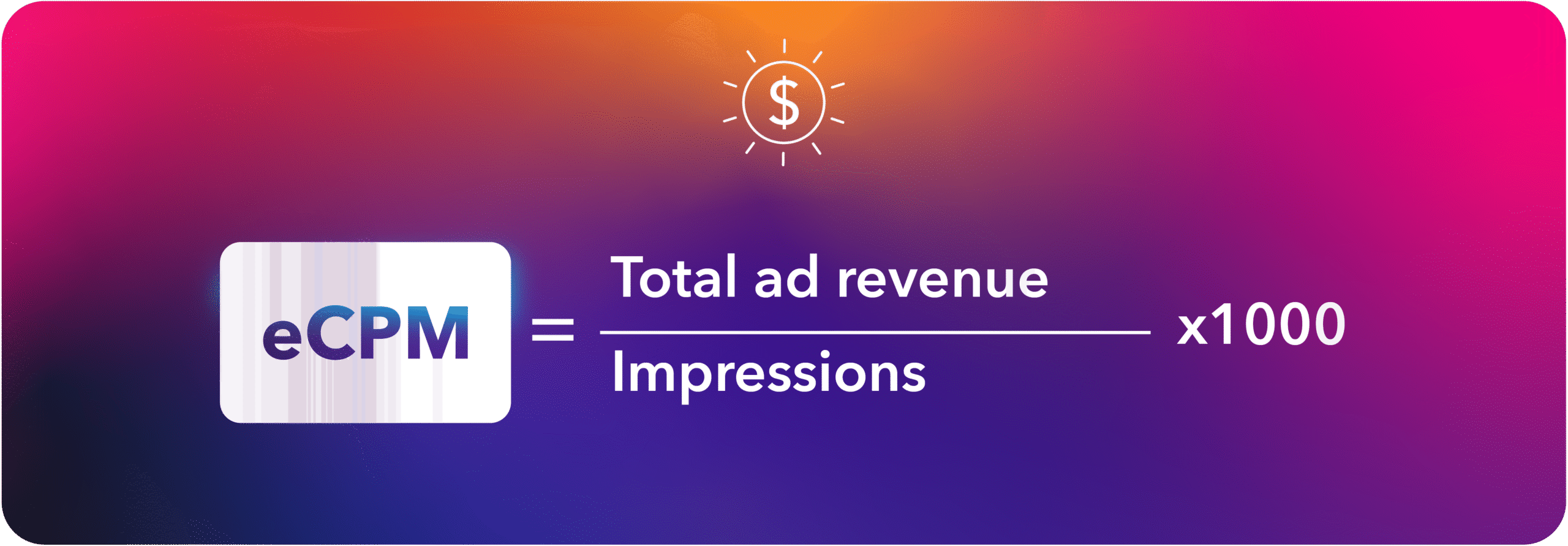
3 Metrics that impact eCPM
eCPM is influenced by several key performance metrics in video advertising, including fill rates, programmatic match rates, and others. Let’s explore metrics and their connection to eCPM.
1. Fill rates
The fill rate is the percentage of ad requests from publishers that are successfully filled with ads. When more ad requests are filled, the fill rate increases, yielding greater opportunities for video publishers to generate revenue from ads.
Publishers can improve their fill rates by utilizing an ad-insertion setup that prioritizes smarter ad requests, optimizes ad break matching, and enhances forecasting capabilities.
2. Programmatic match rates
Programmatic match rates measure the percentage of ad requests that successfully result in a matched ad being served through a programmatic advertising platform. It measures how often an ad opportunity (like a video impression) is filled with a relevant ad from the demand side.
When a video publisher can ensure higher programmatic match rates, the demand for ad placement in their content becomes more valuable to advertisers seeking to put their brand in front of their target audience.
You can increase your programmatic match rates by providing quality metadata when requesting ads. In practice, this involves creating accurate and rich metadata (e.g., content category, language, duration) to improve ad targeting and relevance.
3. Ad viewability
Ad viewability is a metric that measures the percentage of ads that are actually viewed. Ensuring your viewability rate is high can also help you increase your eCPM. That’s why advanced ad viewability tracking is a crucial component for accurately assessing the success of your ads.
Some ad-insertion methods, such as Server-Side Ad Insertion (SSAI), lack the analytics capabilities to determine whether a viewer fast-forwards through or skips an ad. This is problematic because something may count as an impression even if the ad was not viewed in its entirety.
With Server-Guided Ad Insertion (SGAI), advanced viewability tracking becomes a reality, providing a clearer picture of whether ads are truly viewed. Since this data is enriched, it makes it easier to draw conclusions about the results of advertisements on various pieces of content.
How to improve eCPM in video advertising
In addition to improving the metrics we covered above, there are several other ways to improve the eCPM of ads in your video streaming workflows. Here are some actionable tips you can apply to your setup.
Tap into the open ad exchange
As we mentioned, there are several ways to source ads, and using a combination of sources will help you maximize your fill and programmatic match rates. Using a direct-sold inventory as the base of your sourcing strategy is excellent for locking in specific advertisers, but tapping into the open ad exchange creates more advertising opportunities.
If you’re unfamiliar, an open ad exchange is a public digital market that enables dynamic competition for ad slots through open bidding between publishers and advertisers. This helps increase fill rates and, subsequently, eCPM by creating high-quality advertising relationships that benefit all parties involved.
Experiment and optimize
Every streaming setup is different, as there are various styles of video players that can be integrated into a wide range of website and app layouts. With that, there is no standard advertising setup that produces optimal results across the board.
In order to find the right layout for your specific experience, you’ll likely need to go through some trial and error. Experiment with layouts and user interfaces to determine what your audience responds best to. Monitor your statistics as you tweak the experience to ensure your adjustments are moving you in the right direction.
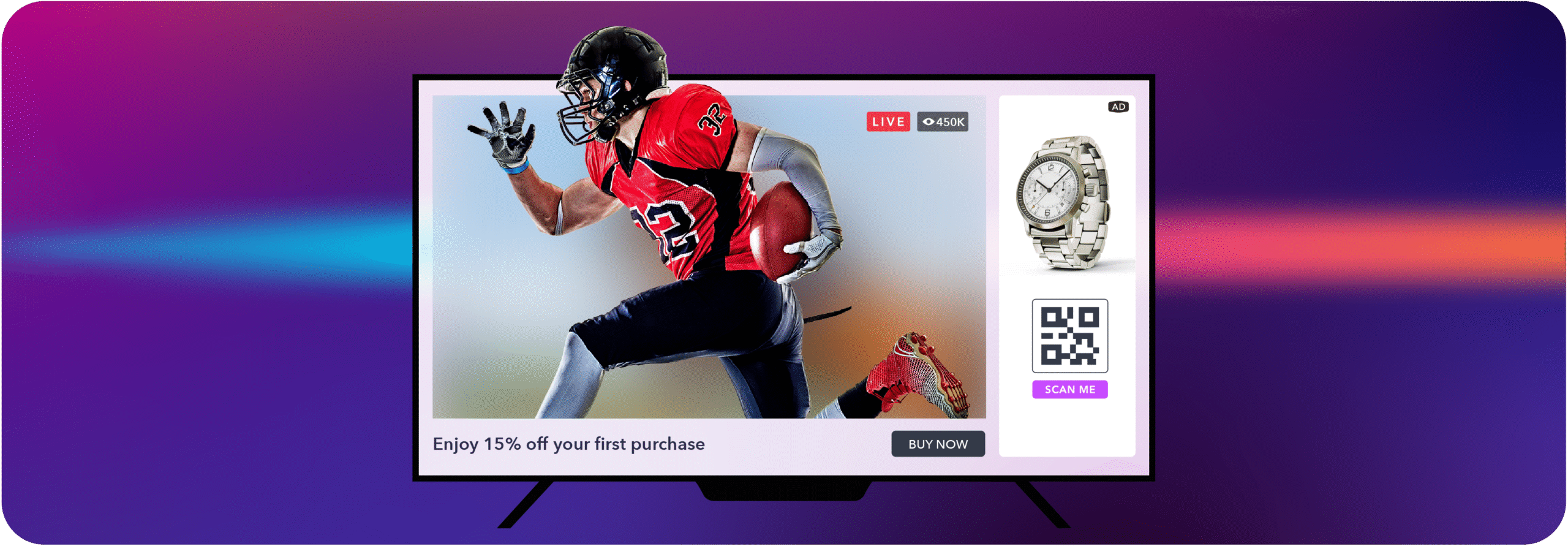
Choose the right ad solution
Many of the techniques we’ve mentioned, including addressing other key advertising metrics, can be achieved by selecting a powerful ad solution, specifically one that uses SGAI technology.
With SGAI, you can create high-quality video advertising experiences at scale without incurring significant costs. It also streamlines ad fulfillment and helps facilitate more user-friendly ad insertion layouts.
If you’re looking for a robust solution that takes all of the questions out of advertising, Dolby OptiView Ads is the option for you. Contact us to discover how we can help you leverage advertising as a monetization option in your video streaming experiences.
Other buying models for video advertising
As we mentioned, CPM is one of several buying models for video advertising. Other buying models may be more relevant in some use cases.
Some other popular video advertising buying models include:
- Cost per click (CPC): advertisers pay publishers for every click on an ad
- Cost per action/acquisition (CPA): advertisers pay for every instance of a specified action (i.e., a purchase is made on their online storefront)
- Cost per completed view (CPCV): advertisers only pay when a user watches an entire ad
- Cost per install (CPI): advertisers who only pay when a user downloads their app from an ad
Typically, the buying model is determined by the ad solution, which acts as the intermediary between publishers and the brands that advertise in their content.
Final thoughts
Understanding what eCPM is and how it works is an essential step in maximizing your ad revenue on your video content. Choosing the right ad solution is paramount in maximizing your eCPM rates.
Looking for a powerful advertising solution that will help you boost your eCPM by increasing fill rates and programmatic tracking while enhancing your viewability metrics? Look no further. Dolby OptiView Ads is here for you.
Our SGAI-powered ads solution is here to help you take your monetization strategy to the next level so you can supercharge your ad earnings. Contact us today to learn more.
FAQ about eCPM
The average eCPM across the advertising industry is typically $4 to $10.
However, it’s useful to calculate the average eCPM on your specific site or platform so you have a baseline to compare against. This allows you to compare apples to apples, giving you a better idea of how successful the ads are on individual pieces of content.
There is no specific “good” eCPM. The most effective way to assess if your eCPM is good is to compare it to previous data from ads on your streaming content. That is why it’s crucial to determine your platform’s average eCPM.
An eCPM floor is the lowest eCPM a video publisher will accept as payment for advertising on their content. This plays into a bidding system that allows advertisers to outbid one another for prime ad placement.
Several factors contribute to a low eCPM. These include:
- Insufficient ad integration partner
- Low competition for ads (i.e., not many publishers are requesting the placement)
- Poor ad placement, layouts, and formats
- Low ad viewability
- Low fill rates



